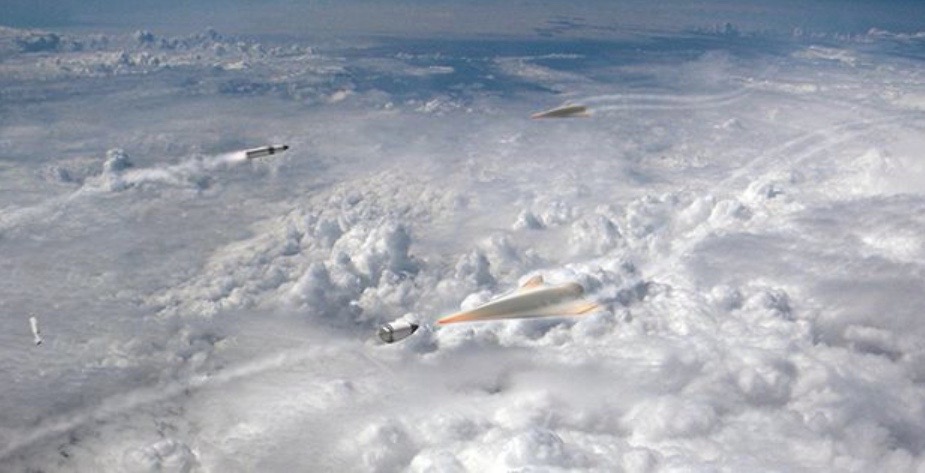DARPA's hypersonic 'Glide Breaker' could blast missile threats out of the sky
Aerojet Rocketdyne just got a contract to develop "enabling technologies" for Glide Breaker.

Aerojet Rocketdyne is working on technology to help knock high-speed maneuverable vehicles out of the sky, under a new contract from the U.S. Defense Advanced Research Projects Agency (DARPA).
Since 2018, DARPA has been developing a "hypersonic defense interceptor" system called Glide Breaker, which is designed to intercept threatening vehicles moving at hypersonic speeds (meaning, at least five times faster than the speed of sound) in Earth's upper atmosphere.
Aerojet Rocketdyne will develop "enabling technologies" for Glide Breaker under the newly announced contract, which is worth up to $19.6 million.
Related: The most dangerous space weapons ever
"Advancing hypersonic technology is a national security imperative," Eileen Drake, Aerojet Rocketdyne CEO and president, said in a statement. "Our team is proud to apply our decades of experience developing hypersonic and missile propulsion technologies to the Glide Breaker program."
Based on the images available on DARPA's Glide Breaker program page, it appears that the new tech will involve launching missiles to hit hypersonic vehicles in flight. No other information about the program, however, is available on the web page.
Aerojet Rocketdyne pointed to other contracts it has with DARPA to show its expertise in hypersonic flight, using either solid-fuel propulsion or engines that are "air-breathing" (typically, gas turbine engines).
Get the Space.com Newsletter
Breaking space news, the latest updates on rocket launches, skywatching events and more!
Both of these technologies were used in the X-51A WaveRider, a vehicle developed by DARPA, the U.S. Air Force and NASA that made the longest-ever hypersonic flight for a vehicle of its kind in May 2013. Aerojet Rocketdyne also did propulsion system test firings for a future ground-launched hypersonic missile, under DARPA's Operational Fires program.
Developing technologies that can knock incoming missiles or other fast-moving vehicles out of the sky is a priority for militaries around the world. The U.S. has worked on numerous such ideas over the years, some of which never got off the ground.
One of the most famous mothballed concepts was the Strategic Defense Initiative (SDI), a complex, space-based system championed by President Ronald Reagan; opponents derisively dubbed it "Star Wars."
- Hypersonic flight is coming: Will the US lead the way?
- How intercontinental ballistic missiles work (infographic)
- Military space: Spacecraft, weapons and tech
Follow Elizabeth Howell on Twitter @howellspace. Follow us on Twitter @Spacedotcom and on Facebook.
OFFER: Save at least 56% with our latest magazine deal!
All About Space magazine takes you on an awe-inspiring journey through our solar system and beyond, from the amazing technology and spacecraft that enables humanity to venture into orbit, to the complexities of space science.
Join our Space Forums to keep talking space on the latest missions, night sky and more! And if you have a news tip, correction or comment, let us know at: community@space.com.

Elizabeth Howell (she/her), Ph.D., was a staff writer in the spaceflight channel between 2022 and 2024 specializing in Canadian space news. She was contributing writer for Space.com for 10 years from 2012 to 2024. Elizabeth's reporting includes multiple exclusives with the White House, leading world coverage about a lost-and-found space tomato on the International Space Station, witnessing five human spaceflight launches on two continents, flying parabolic, working inside a spacesuit, and participating in a simulated Mars mission. Her latest book, "Why Am I Taller?" (ECW Press, 2022) is co-written with astronaut Dave Williams.
-
Anonymous010 Gotta do what we gotta do, I guess, but I'd much rather see DARPA develop a reusable solution to stopping incoming missiles (like lasers or microwaves). Sending up hypersonic gliders just so that they can kamikaze into warheads is wasteful.Reply










